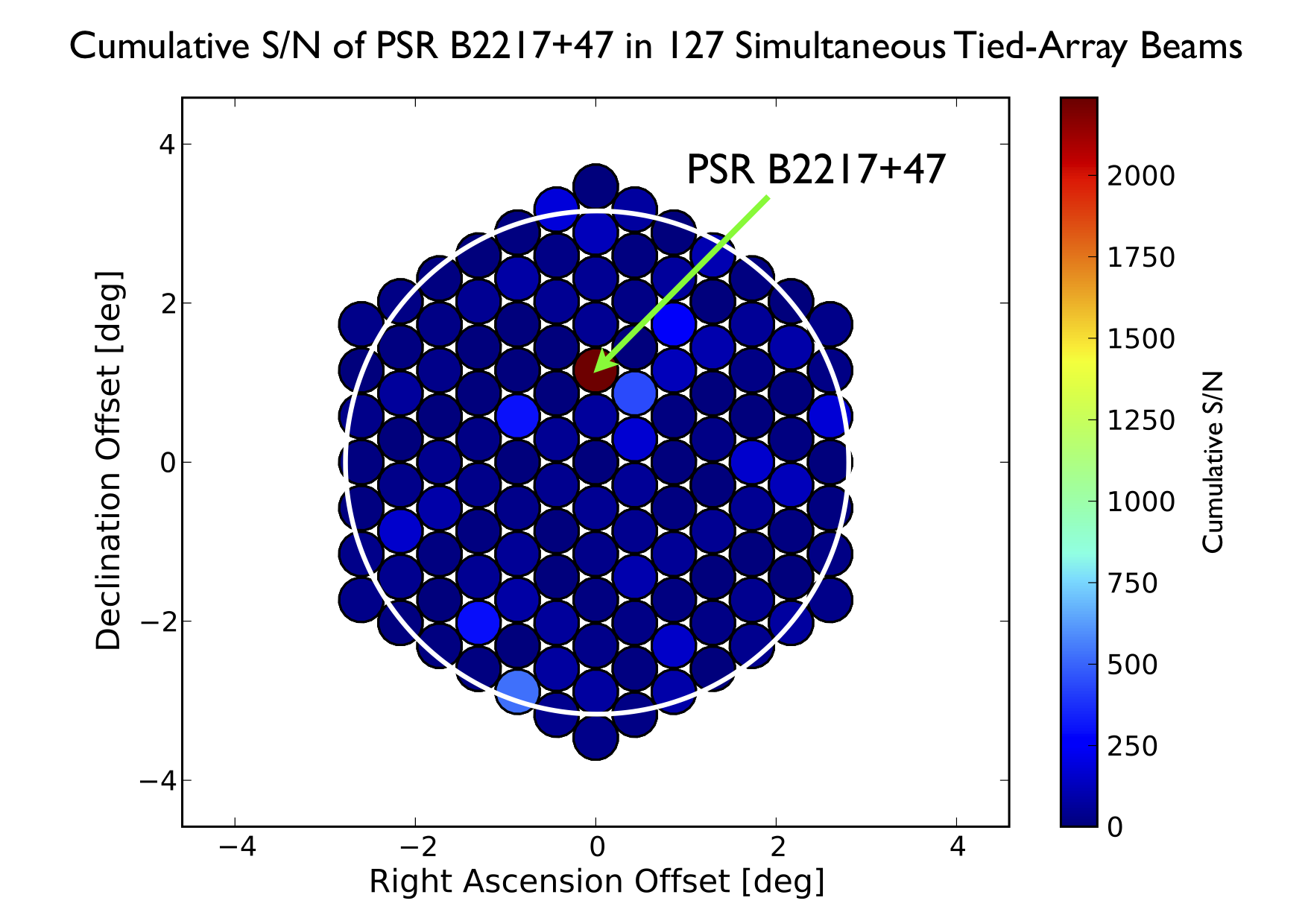Daily Image
19-10-2011127 Tied-Array Beams from the LOFAR Superterp Stations
| Submitter: | The LOFAR Pulsar Working Group |
| Description: | Effective all-sky surveys for pulsars and fast transients require both large field-of-view (FoV) and high sensitivity. LOFAR can achieve high sensitivity for pulsar observations by coherently combining stations together (adding them in phase). However, the FoV of these so-called tied-array beams is reduced in proportion to the distance between the stations. For the LOFAR Superterp, the roughly 5.5-deg FoV in the high-band is reduced to a 0.5-deg FoV when all 12 HBA sub-stations are combined. To regain FoV, one can form multiple tied-array beams simultaneously. This increases the data rate significantly, but allows for efficient all-sky surveys. Previously we have presented tests with 19 tied-array beams formed with the LOFAR Superterp stations. Recently, we have begun tests using 127 tied-array beams, enough to completely cover the 24-tile HBA sub-station FoV. This figure shows the results of a short observation of the bright pulsar B2217+27 in this mode. The pulsar was purposely offset 1 degree north of the center of the station beam (indicated by the white circle). For each tied-array beam the data were dedispersed and folded at the known values for this pulsar in order to produce a cumulative pulse profile. Plotted in color are the signal-to-noise ratios (S/N) of these detections. The pulsar is clearly detected in the correct beam, with a S/N of > 2000. The pulsar was also detected, much more weakly, in other beams, presumably due to side-lobes. This gives good confidence that a LOFAR survey in this mode can reliably pin-point the locations of new sources. For more information on the performance of LOFAR's impressive beam-former, see Mol & Romein (2011) at http://adsabs.harvard.edu/abs/2011arXiv1105.0661M. |
| Copyright: | Hessels/ASTRON |
| Tweet |  |
